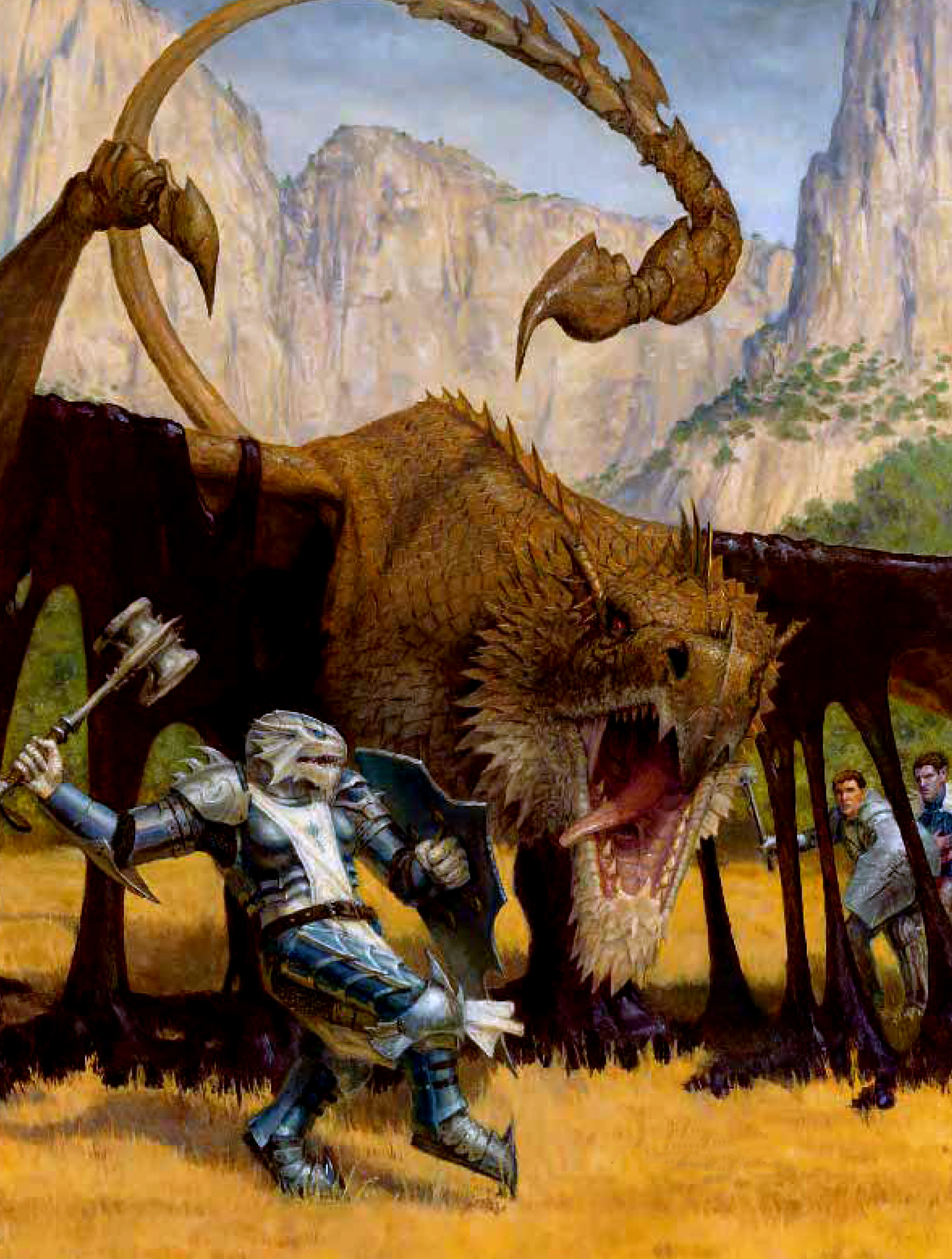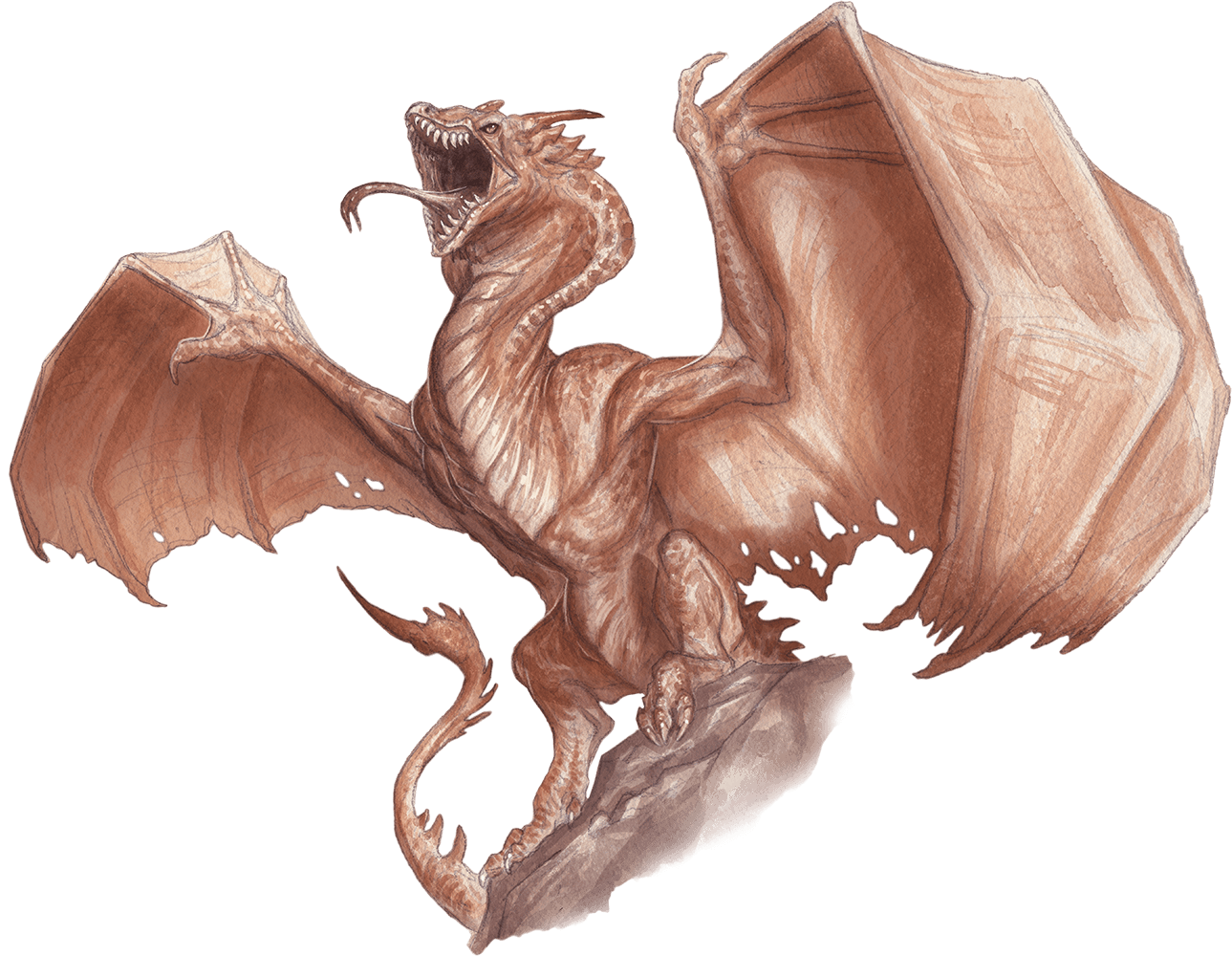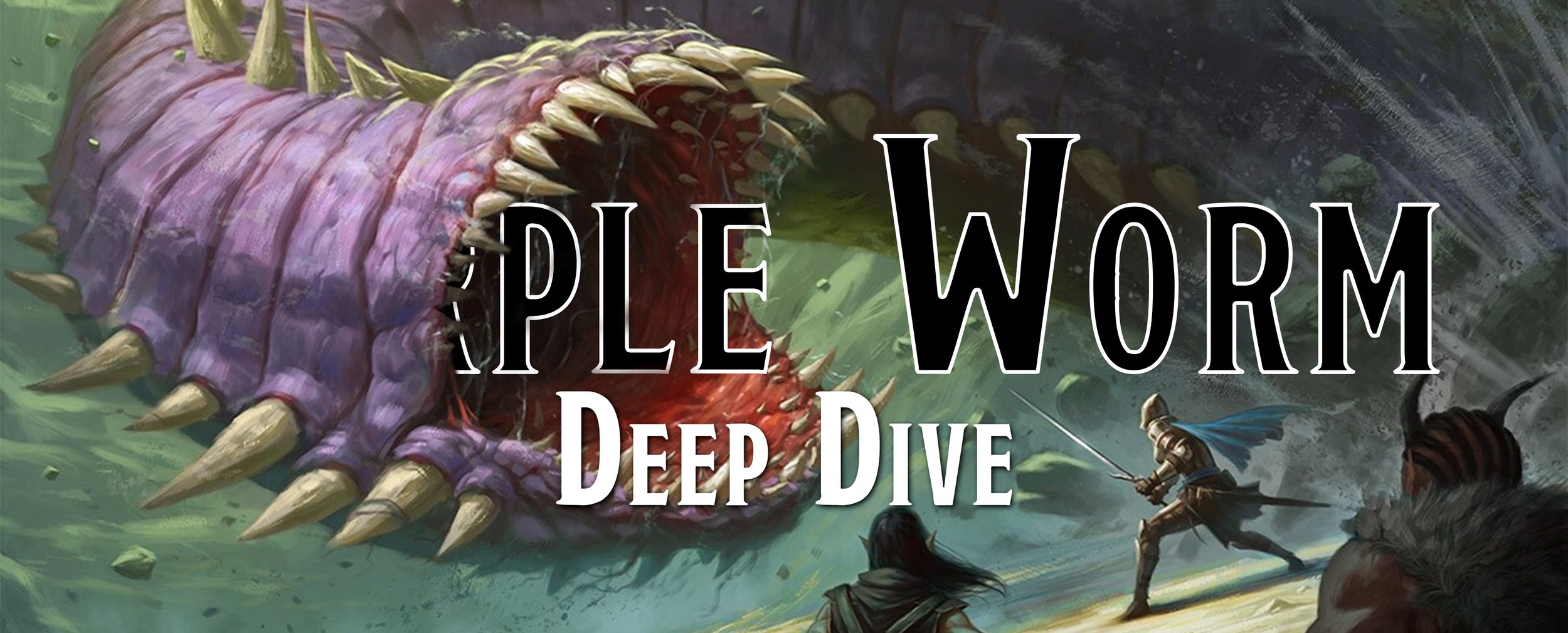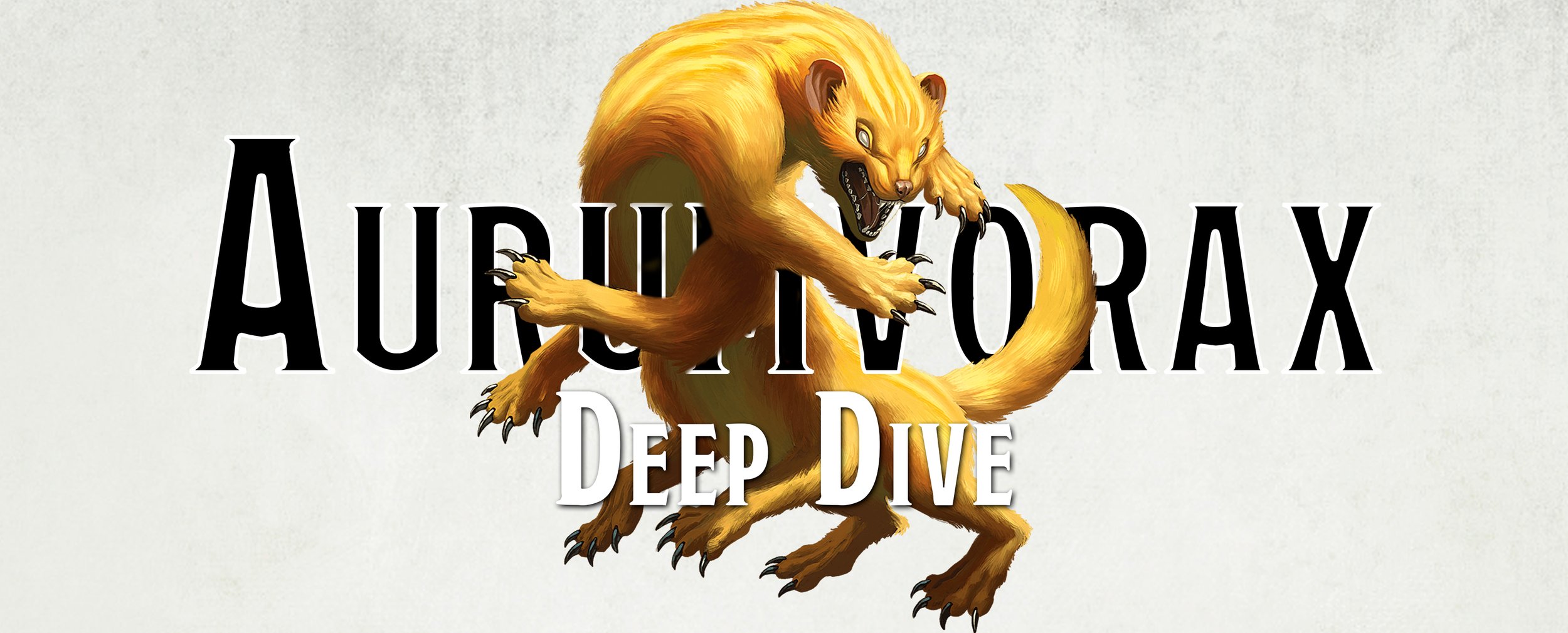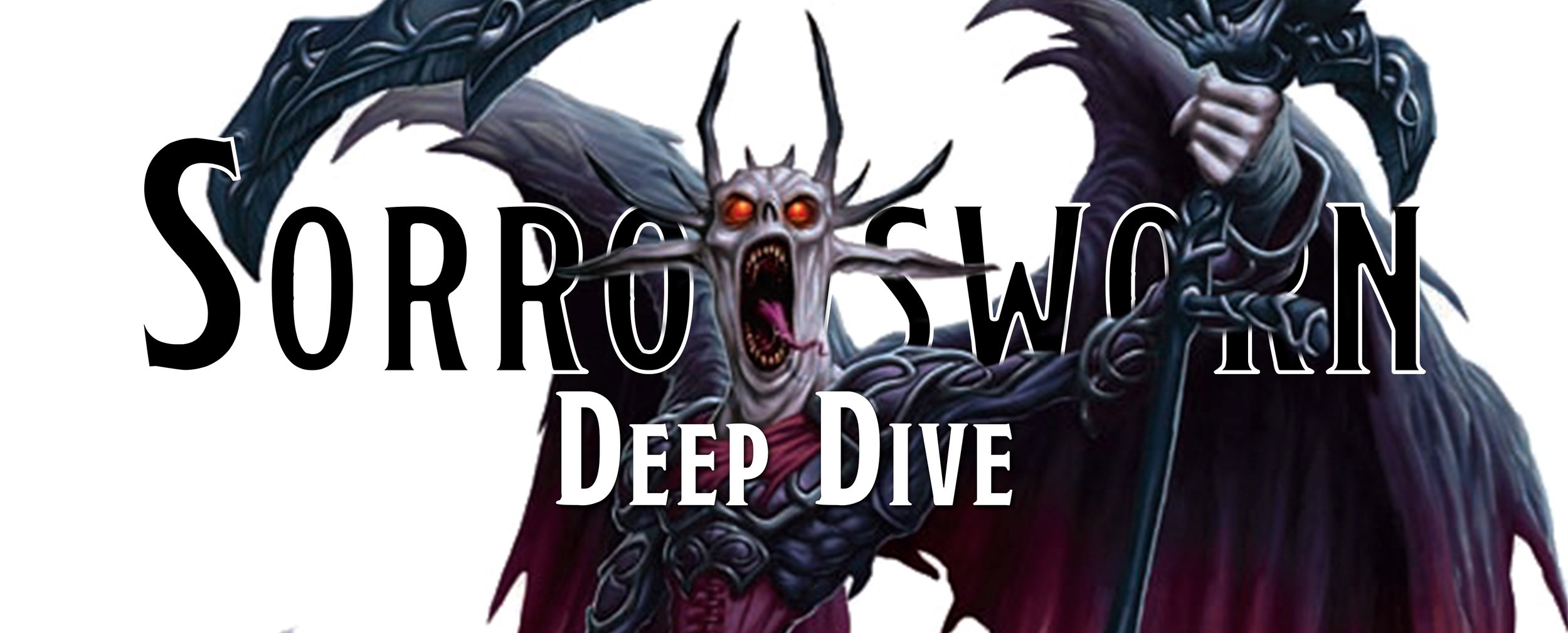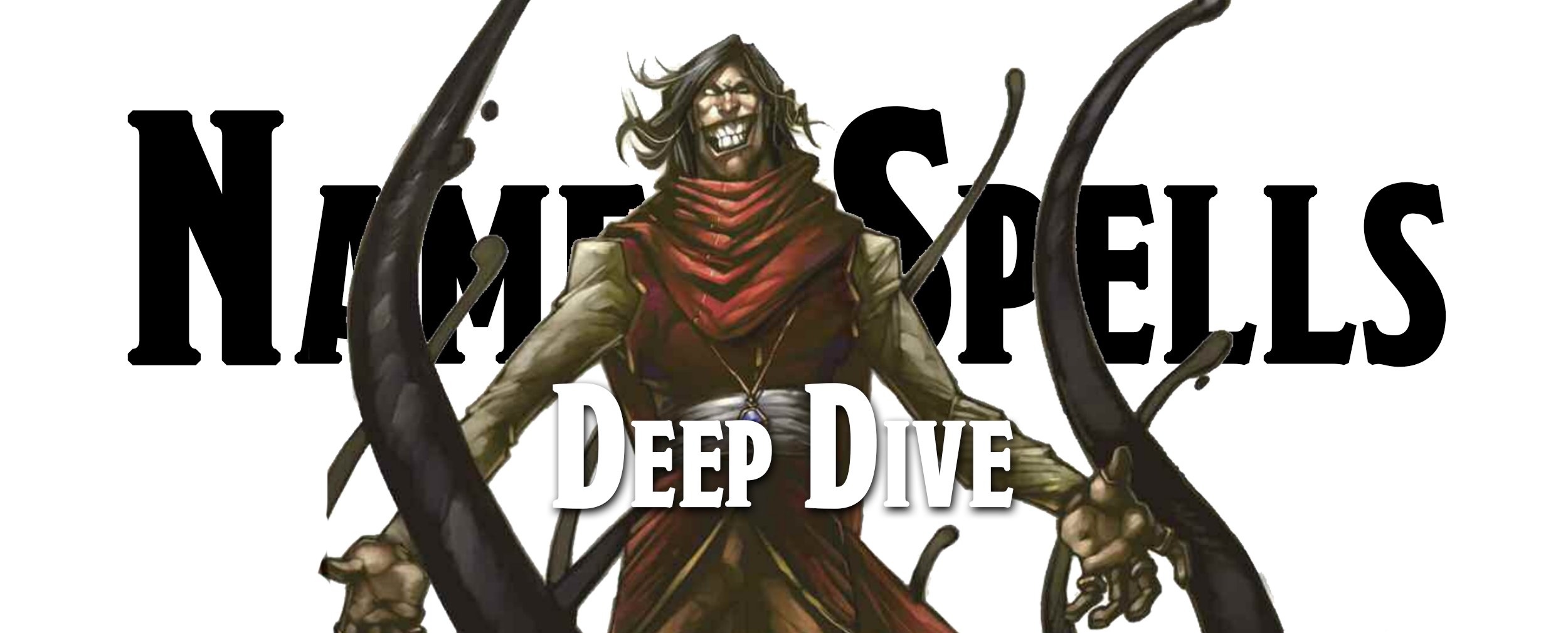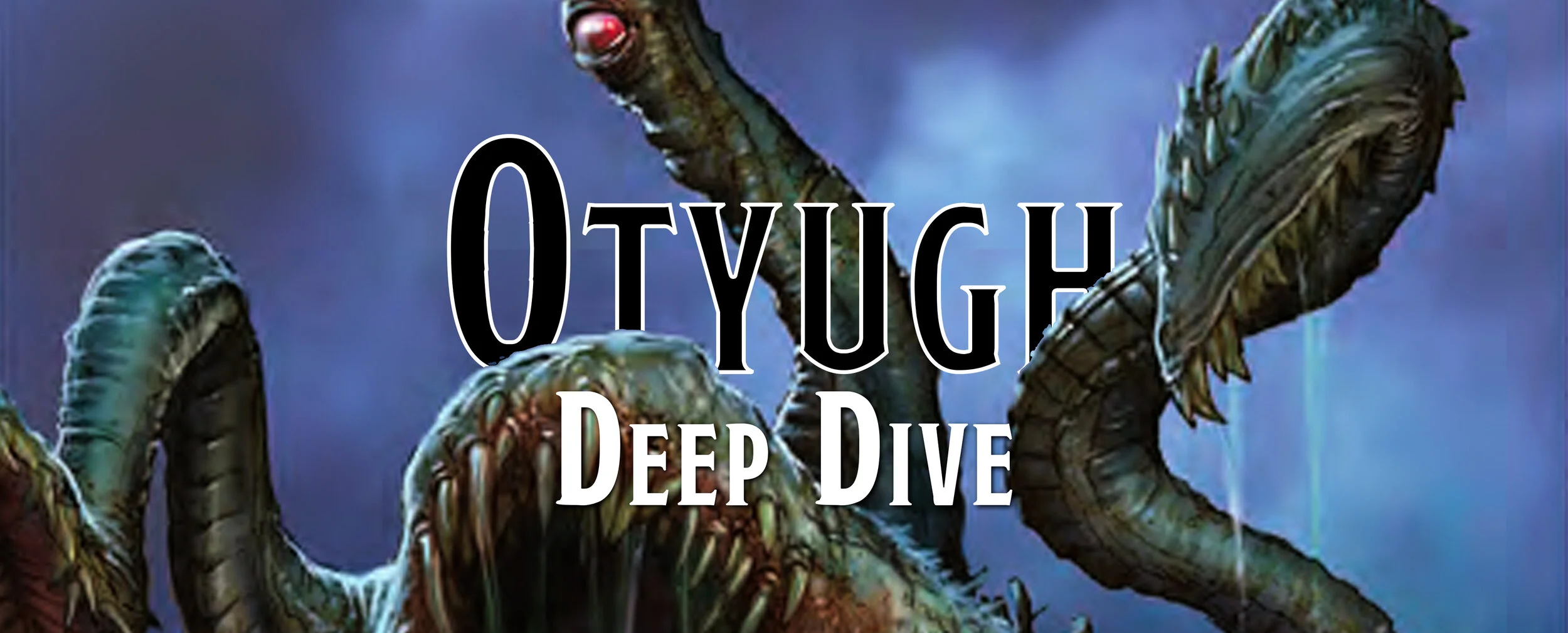Deep Dive - The Wyvern
The Wyvern is many things; a flying two-legged lizard with leathery bat wings, a vicious monster with a really long tail filled with poison, and a firm believer in the ‘death from above’ motto. Many would claim it isn’t a dragon, and that point is made extremely clear in almost every edition, but we would disagree. This creature may not be able to breathe fire or shoot lightning, but its cunning mind and dangerous stinger make it as dangerous as any dragon out there.
OD&D - Wyvern
No. Appearing: 1-6
Armor Class: 3
Move: 9/24
Hit Dice: 7
% in Lair: 60%
No. of Attacks: 1 (bite or sting)
Damage/Attack: 1d6/1d6+poison
Treasure: E
The Wyvern first appears all the way back in Chainmail (1971), the precursor to the original Dungeons & Dragons. Unfortunately for the Wyvern, its appearance in Chainmail’s fantasy supplemental rules leaves quite a lot to be desired as they are seemingly just lumped in with chimeras. The exact stats for the Wyvern are a bit all over the place, as there are references to look at dragons to determine the power of a Wyvern, but also informs the reader that Wyverns are just chimeras. Then again, the roc statistic claims to be the same statistics for Wyverns, giant eagles, griffons, and chimeras while there is no mention of the Wyvern in the dragon statistics.
Once you get through the weeds, you learn that Wyverns, along with rocs and griffons, attack as four-light horses and defend as four heavy horses. Since Chainmail is a wargame, this simply means that Wyverns have some of the abilities of different types of calvary present in the game. Their attack is decent, while their defense statistics are quite high and they are pretty tough as their hit points are equal to 4 heavy horses. If you find that confusing and think judging a creature’s ability based on how good they are compared to a horse is wrong, try explaining that to car engines.
The Wyverns are then introduced in the White Box - Monsters & Treasure (1974) where they are classified as relatives of dragons, but with only two legs and much smaller. Fortunately for these majestic dragon-adjacent creatures, while they can’t breathe fire on you, they do have their own way of killing you in agonizing pain. They have a giant stinger on their tail that they can use to stab into you, and if you don’t make a check against being poisoned, then you just die - probably. The rules are rather vague on what happens when you fail a poison check, and since no monster lists how much damage their poison does, one can only assume it just kills you outright.
If you are hoping to avoid being poisoned, like standing in front of the Wyvern’s head and trying to avoid its tail at all costs. Unfortunately for you, the Wyvern can use its tail like a scorpion, raising the tail over its back and stabbing it straight into you. The only safe space to be when confronted with a Wyvern is about a mile away and running for the nearest tavern where you can safely retire and become a barkeep.
Basic D&D - Wyvern
Armor Class: 3
Hit Dice: 7*
Move: 90’ (30’), Flying 240’ (80’)
Attacks: 1 bite/1 sting
Damage: 2-16/1-6 + poison
No. Appearing: 1-2 (1-6)
Save As: Fighter: 4
Morale: 9
Treasure Type: E
Alignment: Chaotic
Found in the Moldvay/Cook Expert Rules (1981) and in the BECMI Expert Box Set (1983), the Wyvern is nothing more than a blip on the radar. While it holds the questionable honor of being the last creature in the monster gallery in each book, that only means it is as crammed as much in there as possible and barely gets a full paragraph to go over its ecology and abilities.
A Wyvern appears as a two-legged dragon with a long tail that delivers a powerful poison, that kills you if you fail your saving throw. You can avoid these creatures by never venturing near cliffs or in the forest, though that isn’t guaranteed as Original Dungeons & Dragons had an example where a Wyvern was inside a dungeon and around a corner, ready to surprise attack a group of adventurers.
There is no real escape from these dragon-like creatures, as even the BECMI Immortals Rules Box Set (1983) lets you know that Demorgorgon keeps up to 12 of these creatures around them as a special follower. Since their poison automatically kills you if you fail the saving throw, they have no problem just swarming around you trying to hit you and get you to fail just once, even when you are an epic hero capable of taking down Orcus.
AD&D - Wyvern
Frequency: Uncommon
No. Appearing: 1-6
Armor Class: 3
Move: 6”/24”
Hit Dice: 7+7
% in Lair: 30%
Treasure Type: E
No. of Attacks: 2
Damage/Attack: 2-16/1-6
Special Attacks: Poison
Special Defenses: Nil
Magic Resistance: Standard
Intelligence: Low
Alignment: Neutral (evil)
Size: L (35’ long)
Psionic Ability: Nil
Level/X.P. Value: Nil
Monster Manual, 1977 TSR Inc.
Appearing in the Monster Manual (1977), the description is brief and quite insulting. While this stinging two-legged creature is related to the dragon, they aren’t dragons and in fact, it seems like their relationship to them is quite distant. They are basically a third cousin twice removed on their mother's side to the mighty dragon. At least the Wyvern has a better claim to being a dragon than our favorite little dragon, the kobold.
Of course, being described as distantly related to dragons isn’t an insult as we can’t even say the same for ourselves. The insult comes in the third sentence where it describes them as not only incredibly aggressive but also stupid and that they’ll always attack. How any creature related to the mighty and ferocious dragon could be called stupid is beyond us, and we won’t stand for slander against our fire-spewing dragons - even if Wyverns can’t spit fire and instead sting you with their poison-tipped tail.
At least we have more information to go off of for the Wyvern as this edition at least provides some details. Most Wyverns range in color from dark brown to gray with orange or red eyes and a quite long and mobile tail. Their main forms of attack are just biting you for a big juicy hit or hitting you with their tail which, while it deals less damage than their bite, comes with the chance to just kill you outright. Advanced Dungeons & Dragons carries on the proud tradition of just killing your character on a single failed save and they are well aware that poison in this edition is bullshit since the text specifically states to not let your players get access to or even use poison. We can’t imagine why.
Wyverns still love to live amongst the woodland animals in the forest, probably so they can grab a quick snack when they feel a tad hungry. Mimicking dragons, they will also reside in large caverns, sans the giant treasure hoard. While you may hope to never meet a Wyvern, you are more likely to stumble across a Wyvern than you are a tiger due to their rarity given in this edition.
2e - Wyvern
Climate/Terrain: Temperate mountain forests and jungles
Frequency: Uncommon
Organization: Solitary
Activity Cycle: Dusk and dawn
Diet: Carnivore
Intelligence: Low (5-7)
Treasure: E
Alignment: Neutral (evil)
No. Appearing: 1-6
Armor Class: 3
Movement: 6, Fl 24 (E)
Hit Dice: 7+7
THAC0: 13
No. of Attacks: 2
Damage/Attack: 2-16/1-6
Special Attacks: Poison
Special Defenses: Nil
Magic Resistance: Nil
Size: G (35’ long)
Morale: Very Steady (14)
XP Value: 1400
Monstrous Compendium Vol. 1, 1989 TSR Inc.
Appearing in the Monstrous Compendium Vol. 1 (1989) and the Monstrous Manual (1993) gives us a massive Wyvern, over 35 feet long, 17 feet of which is a tail. It is a massive tail that ends in a tough two-foot-long stinger waiting to poison you and instantly kill you if you happen to roll poorly. Its head measures over 4 feet long with a mouth full of razor-sharp teeth that can easily shred you apart. If you think that it can’t get any scarier, just wait until its spreads its wings to its full 50-foot wingspan and unleashes a mighty roar.
If you are unlucky to be attacked by a Wyvern, because let’s face it, no one in their right mind is trying to attack them first, the Wyvern uses its two legs like a hawk or eagle. It swoops down onto its prey, crushing them with its weight before grabbing on to them with its powerful talons and flapping away with its meal, all the while giving its meal a few jabs with its tail to ensure that any remaining life is poked out of them. If you somehow survive this attack, you’ll be able to admire its dark brown to gray hide and red or orange eyes that glisten with an aggressive frenzy. You can try to reason with the creature but they only make two sounds - a loud hiss and a low growl… which probably translates to you smell tasty and you look tasty.
Monstrous Manual, 1993 TSR Inc.
The Wyvern is a lone wolf, preferring the solitary where it can gorge itself on its catch without having to share with anyone. They make their homes like dragons, seeking out large caverns in mountainsides with breathtaking views. While each Wyvern would prefer its own territory, they do band together if food is hard to come by, with the eldest Wyvern being the arbitrator of any issues. Speaking of food, a Wyvern needs to eat something the size of a medium-to-large creature every day. Do you know what fits that description perfectly? You and your merry band of friends. If you are incredibly unlucky, the Wyvern might even be teamed up with an evil dragon, which means that you and your merry band of friends might not be enough to satiate both of them.
In Dragon Magazine Annual #1 (1996) Wyvern are given an expose in the Ecology of the Wyvern by Spike Y. Jones. It's another inappropriate story told to small children, and while the writers are nothing if not consistent, we think it’s a disturbing trend. The story is told by the bard Brendan Farwanderer about him, and his party of heroes who were hired by the local lord to slay a Wyvern and gather up his son's remains for a proper burial. The lord's son, along with a contingent of troops, had tried to kill the Wyvern using a pike of dragon-slaying. Luckily for the Wyvern, being a third cousin twice removed of dragons meant that the pike didn't work, and it promptly killed almost everyone and flew off with the lord’s son.
Dragon Magazine Annual 1, 1996 TSR Inc.
The story provides some new insight about the Wyvern previously unknown to us. A Wyvern marks its territory by using its poison, much like a dog peeing on everything. When another Wyvern is flying and wants to claim the land its own, the two creatures engage in beautiful but frightening aerial combat. They won't actually attack each other but instead, try to shove their tail into the other's mouth. Ignoring the obvious phallic symbolism, once the Wyverns manages to do it, they release poison into the other's mouth, and victory is theirs. After doing a happy little celebration jig, we assume, the Wyvern then drips poison over the defeated Wyvern markings throughout their newly acquired property.
3e/3.5e - Wyvern
Large Dragon
Hit Dice: 7d12+14 (59 hp)
Initiative: +1
Speed: 20 ft. (4 squares), fly 60 ft. (poor)
Armor Class: 18 (–1 size, +1 Dex, +8 natural), touch 10, flat-footed 17
Base Attack/Grapple: +7/+15
Attack: Sting +10 melee (1d6+4 plus poison) or talon +10 melee (2d6+4) or bite +10 melee (2d8+4)
Full Attack: Sting +10 melee (1d6+4 plus poison) and bite +8 melee (2d8+4) and 2 wings +8 melee (1d8+2) and 2 talons +8 melee (2d6+4)
Space/Reach: 10 ft./5 ft.
Special Attacks: Improved grab, poison
Special Qualities: Darkvision 60 ft., immunity to sleep and paralysis, low-light vision, scent
Saves: Fort +7, Ref +6, Will +6
Abilities: Str 19, Dex 12, Con 15, Int 6, Wis 12, Cha 9
Skills: Hide +7, Listen +13, Move Silently +11, Spot +16
Feats: Ability Focus (poison), Alertness, Flyby Attack, Multiattack
Enviroment: Warm hills
Organization: Solitary, pair, or flight (3-6)
Challenge Rating: 6
Treasure: Standard
Alignment: Usually neutral
Advancement: 8–10 HD (Huge); 11–21 HD (Gargantuan)
Level Adjustment: -
Monster Manual, 2003 WotC
The Wyvern is found in the Monster Manual (2000/2003) and the insults continue in this edition, the first one is that they are called a flying two-legged lizard. It should be two-legged dragons since they are still relatives of dragons, but it seems as if the relationship is now more like they are very distant cousins, three times removed and only related to them through a best friend’s marriage. There is some conflicting data between 3e and 3.5e with the former stating they are 30 feet long while the latter states that they are only 15 feet long. Regardless of which one it actually is, a good half of each of their body is devoted to just their wicked and devastating tail.
As you might have guessed, their tail ends in a thick knot of cartilage with a stinger at the very end, delivering a powerful poison if you happen to get stung. Of course, saying ‘stung’ implies something like a wasp or a bee just pricking your skin, for a Wyvern, it’s shoving a foot-long barb and injecting you with a powerful poison that reduces your Constitution by 2d6 points, and then a minute later they must make another a second save or take an extra 2d6 points of damage to their Consitution. While it may not be as bad as instantly dying, it can kill you outright if it reduces your Constitution score to 0.
Another insult flung at the Wyvern in this edition is that they are stupid, which is nothing new for these noble dragons. In a book where the word stupid is only used four times, the fact they use it twice for the Wyvern is just the bias of the writers shining through. It’s especially insulting because the Wyverns can hear you slinging insults at them as they can speak Draconic, they just choose to hiss and growl at you, probably because they were told if you can’t say something nice, don’t say it at all. The writers could learn a lot from the Wyverns. Strangely, in 3e only a few Wyverns can speak Draconic while in 3.5e, every Wyvern has that ability.
Wyverns are still known for their hyper-aggressive behavior, epitomizing death from above. Their preferred tactics include them descending upon you with talons ready to slash you to ribbons as they flyby. When their talons connect, they’ll attempt to grab you, yanking you up into the sky while its stinger begins pelting you over and over until you finally give up and become its dinner. If you are a bit too painful and fight back, they can simply toss you to the ground, hoping that the fall will tenderize you just a bit.
Races of the Dragon, 2006 WotC
While the Wyvern doesn’t get much love in this edition, it does appear in some scattered texts. In Draconomicon; The Book of Dragons (2003), Tiamat is described as having a Wyvern’s tail. This only goes to show you that Wyverns are indeed dragons seeing as how the goddess of dragons is walking around with their tail. We also get information on how you can use a Wyvern as a mount, that abyssal drakes are the worst aspects of the Wyvern, and that dragons and Wyverns can produce babies. Scythia is a half-brass dragon and half-Wyvern and is the result of a rare mating that has made her an outcast among Wyverns and brass dragons. While not the sharpest tool in the shed, Scythia retains all the traits of a Wyvern and can breathe fire in a 60-foot line once a day, so at least she’s got that going for her.
In Races of the Dragon (2006), it opens up with a story about how a group led by a paladin of Bahamut fights and defeats a Wyvern. It’s not a very long story, and the Wyvern is unsuccessful in killing any of these adventurers. The rest of the book is about dragons and their influences on magic, magic items, and more but the Wyvern barely gets a mention throughout it and one can’t help but feel like they are being snubbed.
4e - Wyvern
Level 7 Skrimisher
Large natural beast (mount, reptile) / XP 500
Initiative +10 / Senses Perception +12; low-light vision
HP 106; Bloodied 53
AC 24; Fortitude 24, Reflex 20, Will 19
Speed 4, fly 8 (hover); see also flyby attack
Bite (standard; at-will) Reach 2; +15 vs. AC; 1d8 + 7 damage.
Claws (standard; at-will) The wyvern can attack with its claws only while flying; +15 vs. AC; 1d6 + 7 damage, and the target is knocked prone.
Sting (standard; at-will) ✦ Poison Reach 2; +15 vs. AC; 1d6 + 4 damage, and the wyvern makes a secondary attack against the same target. Secondary Attack: +13 vs. Fortitude; ongoing 10 poison damage (save ends).
Flyby Attack (standard; at-will) The wyvern flies up to 8 squares and makes one melee basic attack at any point during that movement. The wyvern doesn’t provoke opportunity attacks when moving away from the target of the attack.
Aerial Agility +2 (while mounted by a rider of 10th level or higher; at-will) ✦ Mount While flying, the wyvern grants its rider a +2 bonus to all defenses.
Alignment Unaligned / Languages -
Str 24(+12) Dex 17 (+8) Wis 15 (+7) Con 18 (+9) Int 2 (+1) Cha 8 (+4)
Found in the Monster Manual (2008), we get the Wyvern and its nasty shadow kin, the Fell Wyvern. There really isn't much to say about the two-legged dragon that we haven't discussed already, but a few nuggets can be gleaned from the text. The first is that Wyverns are closer in kin to drakes and not dragons. Drakes, for the uninitiated, are more like ugly dinosaurs than dragons in this edition, and we won’t stand for this besmirching of the Wyvern’s good name.
Monster Manual, 2008 WotC
If you are like us and want a Wyvern to train up and take on your enemies, you are in luck as they can be domesticated. If you can raise a Wyvern from birth, and keep it from killing you or your allies, you’ll have a wonderful companion that can strike fear into your enemies and, hopefully, won’t accidentally sting you when it gets too excited at the smell of blood.
If you get into a fight with Wyvern, be ready with ranged attacks. The Wyvern first attacks by shooting past you with its powerful wings and knocking you around with its talon or just shooting its stinger into you. It continues to harry its opponents, never sticking around in one spot for long so you can’t get a very good hit while it continues to weaken you until you can’t even fight back. Once you are tired, weak with poison, and losing worrying amounts of blood, it’ll finally stop and scoop you up in its talons, flying off with you into the sunset before devouring you. If you manage to hold it off and bloody the creature, it’ll take to the air and fly off, not wanting to risk itself on what it thought was an easy meal.
The second type is the Fell Wyvern, which is a much more powerful Wyvern, born of the Shadowfell but dwelling in the natural world. This Wyvern's poison is much stronger than a typical Wyvern, though neither of them will simply kill you outright but rather slowly drain you of hit points throughout the fight. What makes the Fell Wyvern genuinely stand apart is its pestilence breathe attack. It's a close-range attack only, but if you take a blast to the face, you’ll be struck with necrotic damage and continue to take necrotic damage until you can finally save against it. So not only do you have to deal with poison slowly ticking away your life, you also have to deal with necrotic energy slowly killing you, all the while a large dragon is ripping you apart with its talons and then flying out of reach.
There are two Draconomicon books in this edition with Draconomicon: Chromatic Dragons (2008) and Draconomicon: Metallic Dragons (2009); and neither of them gives the Wyvern its due. While there are brief mentions here and there, the Wyvern is once again snubbed in a book about dragons. You’d think being the only dragon with a stinging tail would be enough to give it some much-deserved respect, but sadly you would be mistaken.
5e - Wyvern
Large dragon, unaligned
Armor Class 13 (natural armor)
Hit Points 110 (13d10 + 39)
Speed 20 ft., fly 80 ft.
STR 19 (+4) DEX 10 (+0) CON 16 (+3) INT 5 (-8) WIS 12 (+1) CHA 6 (-2)
Skills Perception +4
Senses darkvision 60 ft., passive Perception 14
Languages -
Challenge 6 (2,300 XP)
Multiattack. The wyvern makes two attacks: one with its bite and one with its stinger. While flying, it can use its claws in place of one other attack.
Bite. Melee Weapon Attack: +7 to hit, reach 10 ft., one creature. Hit: 11 (2d6 + 4) piercing damage.
Claws. Melee Weapon Attack: +7 to hit, reach 5 ft., one target. Hit: 13 (2d8 + 4) slashing damage.
Stinger. Melee Weapon Attack: +7 to hit, reach 10ft., one creature. Hit: 11 (2d6 + 4) piercing damage. The target must make a DC 15 Constitution saving throw, taking 24 (7d6) poison damage on a failed save, or half as much damage on a successful one.
Monster Manual, 2014 WotC
The Monster Manual (2014) brings us fresh hope for the Wyvern as they are now confirmed as cousins to dragons! We are one step closer to everyone admitting that the Wyvern, much like the kobold, is a true dragon. In addition, the Wyvern isn't called stupid either, which is nice since writers have been treating them as a punching bag for far too long. While they may not be as intelligent as chromatic or metallic dragons, neither are you and we don’t hold that against you.
Known as cunning and aggressive hunters, they are quite deadly predators and know when to be patient and when to flee. If you try to hide, they’ll wait where you’re hidden and bide their time as their tail flicks in and out of your hiding spot, hoping to get a lucky hit against you. If you run, they’ll just fly after you, and with a flight speed of 80 feet per round, they can comfortably keep up with you even if you are booking it across the open grasslands. The only thing you can hope for is that they notice some other tasty morsels, like a wizard who has their nose in a book and isn’t paying attention to the screeching two-legged dragon about to pounce on them.
Monster Manual, 2014 WotC
The biggest attack of the Wyvern is still their stinger that delivers a powerful poison, though there is no instant death. Instead, it just delivers a ton of damage and you get a chance to halve how much damage you take from the poison. There is no persistent damage, no draining of your constitution, just direct damage to your hit points, which is fairly boring since that’s pretty much how every other monster’s poison works. At least the description of the poison is fascinating seeing as how it is described as burning through a victim’s bloodstream and disintegrating veins and arteries, and eventually the heart. As you can probably imagine, the poison is valuable to alchemists and dilettantes who dabble in toxins but let's not get ahead of ourselves. You have to survive and harvest the poison before collecting your riches.
A fearless individual can use a Wyvern as their mount. Now, it's not as easy as strolling into town and buying one. The best way to become a Wyvern rider is to raise one from birth, but that's going to take a long time. Domesticating one is always an option, but it may cost you some fingers, a leg, or your life. Their violent temperaments are legendary and they can quickly grow to a size that makes them dangerous if a would-be master hasn’t been doing their due diligence and properly training their behavior. But, if you are able to train one and ride it into battle, you’ll at least get to call yourself a dragon rider.
The Wyvern has had a pretty steady career throughout Dungeons & Dragons, even if it has been insulted in almost every edition it appears in. While they are the most intelligent of all dragons, we would never say it to their face, regardless if they can understand draconic or not. These cunning predators are apex hunters and deserve far more respect for their dangerous behavior than they get. We can only hope that the upcoming book, Fizban’s Treasury of Dragons, brings with it some much-needed love for this two-legged dragon.
If you enjoy our Deep Dive series, consider
supporting us on Patreon and following us on Twitter!







